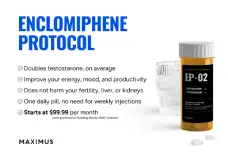IronKnight
Member
Rhonda Patrick has a nice science literature review about collagen supplementation here:

I find this interesting for joint health:
And this sounds interesting to improve glucose and blood pressure (I found this surprising!):
Do you supplement with Hydrolyzed Collagen? If so:
1. How do you take it? What dosage do you use? Any recommended brand?
2. Do you anecdotally notice any improvements in joint health?
3. Have you measured any interesting changes in your HbA1c, fasted glucose, HDL, LDL or Triglycerides?
FoundMyFitness Topic - Hydrolyzed collagen
Hydrolyzed collagen, a mixture of peptides derived from collagen, may improve skin aging, decrease arthritis-induced pain, increase bone mineral density, and reduce hypertension.
www.foundmyfitness.com
I find this interesting for joint health:
2 to 10 grams of hydrolyzed collagen per day for ten to 48 weeks decreased pain, stiffness, and functional limitations in five randomized placebo-controlled trials in people with osteoarthritis[30] 100 micrograms of chicken type II collagen once daily elicited significant decreases in pain, morning stiffness, tender joint count, and swollen joint count at 12 and 24 weeks in people with rheumatoid arthritis.[38]
And this sounds interesting to improve glucose and blood pressure (I found this surprising!):
Hydrolyzed collagen powder induced a notable decrease in HbA1c, a marker indicative of improved diabetic glucose control.
The participants who received hydrolyzed collagen had a 19.7 percent decrease in fasting blood glucose after three months of treatment compared to baseline. The participants who received a placebo had a slight 3 percent increase in fasting blood glucose. Additionally, HbA1c, a long term measure of blood glucose levels, decreased by 6.8 percent compared to baseline in the participants who supplemented with hydrolyzed collagen, while the participants who supplemented with the placebo saw a 1.7 percent increase in HbA1c levels compared to baseline. After three months, systolic blood pressure was significantly decreased in both groups of participants, but diastolic blood pressure significantly decreased by 5.7 percent compared to baseline, but only in the participants who supplemented with hydrolyzed collagen. Lastly, hydrolyzed collagen significantly reduced levels of plasma triglycerides, cholesterol, low-density lipoprotein, and free fatty acids, while increasing high-density lipoprotein at three months compared to baseline levels.[63]
Do you supplement with Hydrolyzed Collagen? If so:
1. How do you take it? What dosage do you use? Any recommended brand?
2. Do you anecdotally notice any improvements in joint health?
3. Have you measured any interesting changes in your HbA1c, fasted glucose, HDL, LDL or Triglycerides?
Last edited by a moderator:














